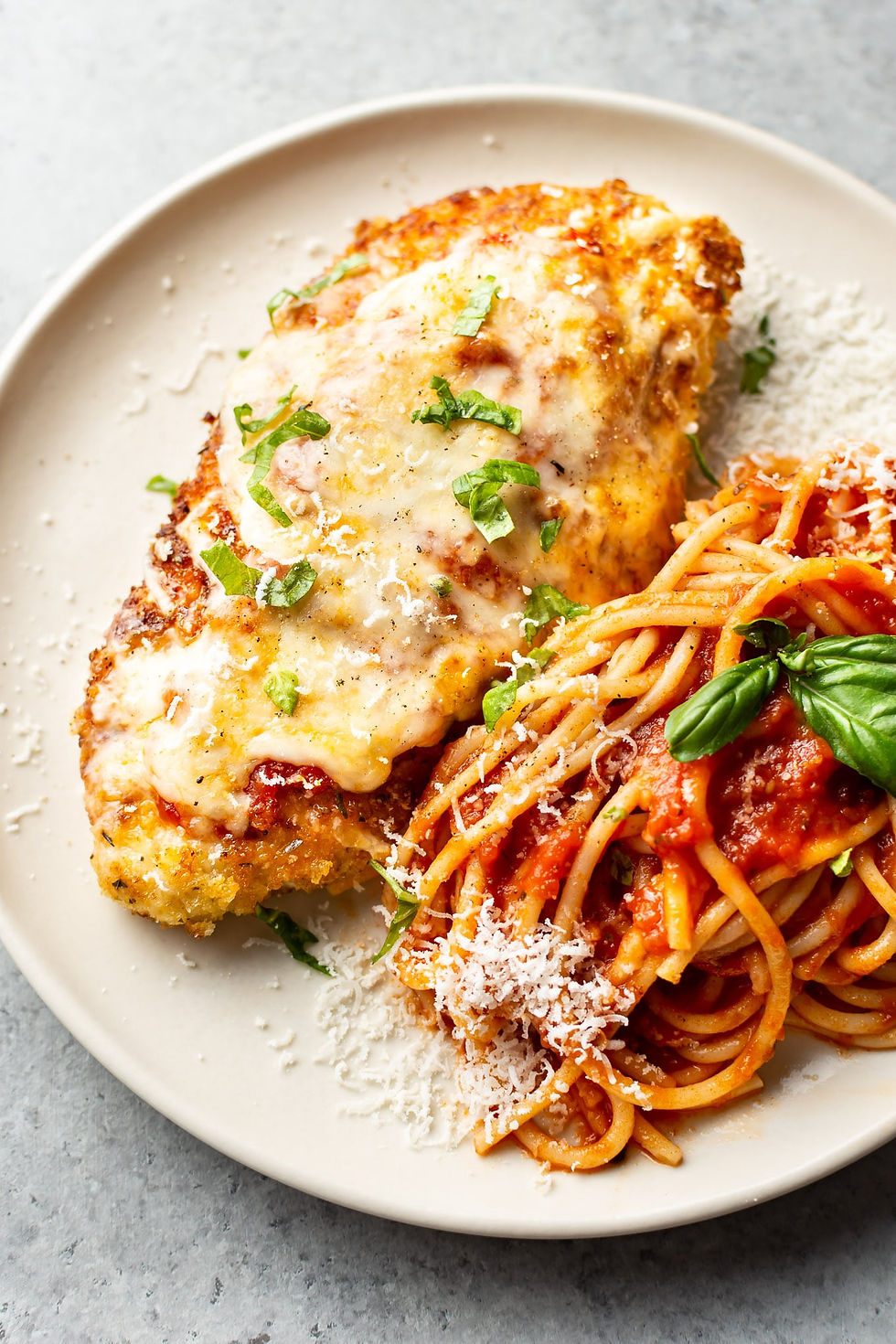Chicken Parmigiana: Where It Came From and What Belongs on the Side?
- Jack Guy

- Aug 16
- 2 min read

Few pub classics stir up more heated debate than the mighty chicken parmigiana. For some, it’s the golden hero of the counter meal — crispy schnitzel, rich tomato sauce, bubbling cheese, and maybe a slice of ham underneath for good measure. But as every pub-goer in Australia knows, the real argument begins once the plate hits the table: should it come with spaghetti or chips?
The Origins: Not Quite Italian, Not Quite Aussie
The chicken parmigiana didn’t start its life as the beer-soaking favourite we know today. Its roots trace back to melanzane alla Parmigiana, an Italian dish of layered eggplant baked with tomato sauce, basil, and Parmesan. Italian immigrants in the United States swapped the eggplant for veal or chicken cutlets, and Chicken Parmigiana was born. By the 1950s and ’60s, it was a staple in Italian-American red-sauce joints, always served with a mound of pasta.
From there, the dish migrated Down Under. Australians, true to form, made it bigger, crunchier, and cheesier. Pub chefs swapped spaghetti for chips, and suddenly the “parma” (or “parmi,” depending on which state you live in) was a mainstay of the counter meal culture.
Team Spaghetti vs Team Chips
So, which way is right?
Spaghetti traditionalists argue that parmigiana is, at its heart, an Italian dish, and no Italian nonna would ever dream of serving it with a pile of chips. The sauce and cheese were meant to mingle with pasta, making a hearty, cohesive meal.
Chips loyalists fire back that the pub parma is its own thing. It’s not pretending to be Italian, it’s Aussie comfort food. The crunch of hot chips against the schnitzel’s crispy coating is unbeatable, and the chips double as a vehicle for soaking up that rich tomato sauce.
The Verdict?
In America, it leans to the Italian heritage; in Australia, it’s a pub classic. I’d argue that context is everything: if you’re in a trattoria, bring on the spaghetti. If you’re at the pub with a schooner in hand, chips all the way.
At the end of the day, the real crime isn’t what’s beside the parma, it’s when the schnitzel is soggy, the cheese is rubbery, or the sauce tastes like it came from a tin. Nail the fundamentals, and whether you call it a “parmi” or a “parma,” serve it with chips or spaghetti, you’re always in for a winner. What's your preference?

%20(1).png)







Comments